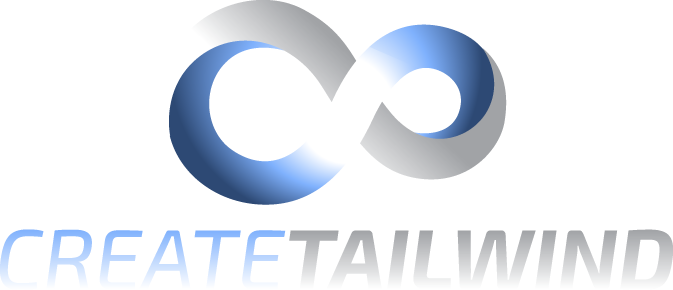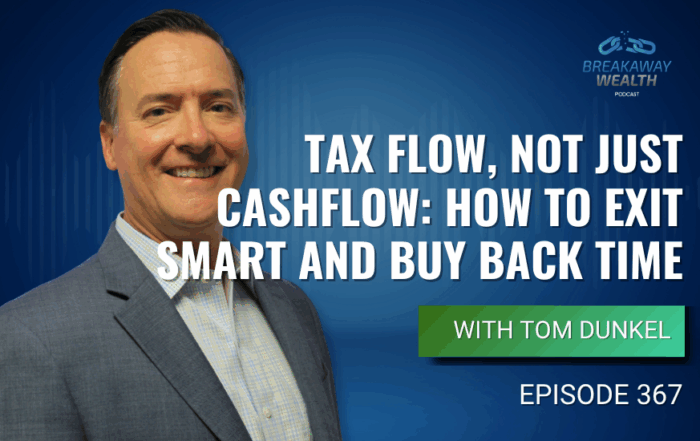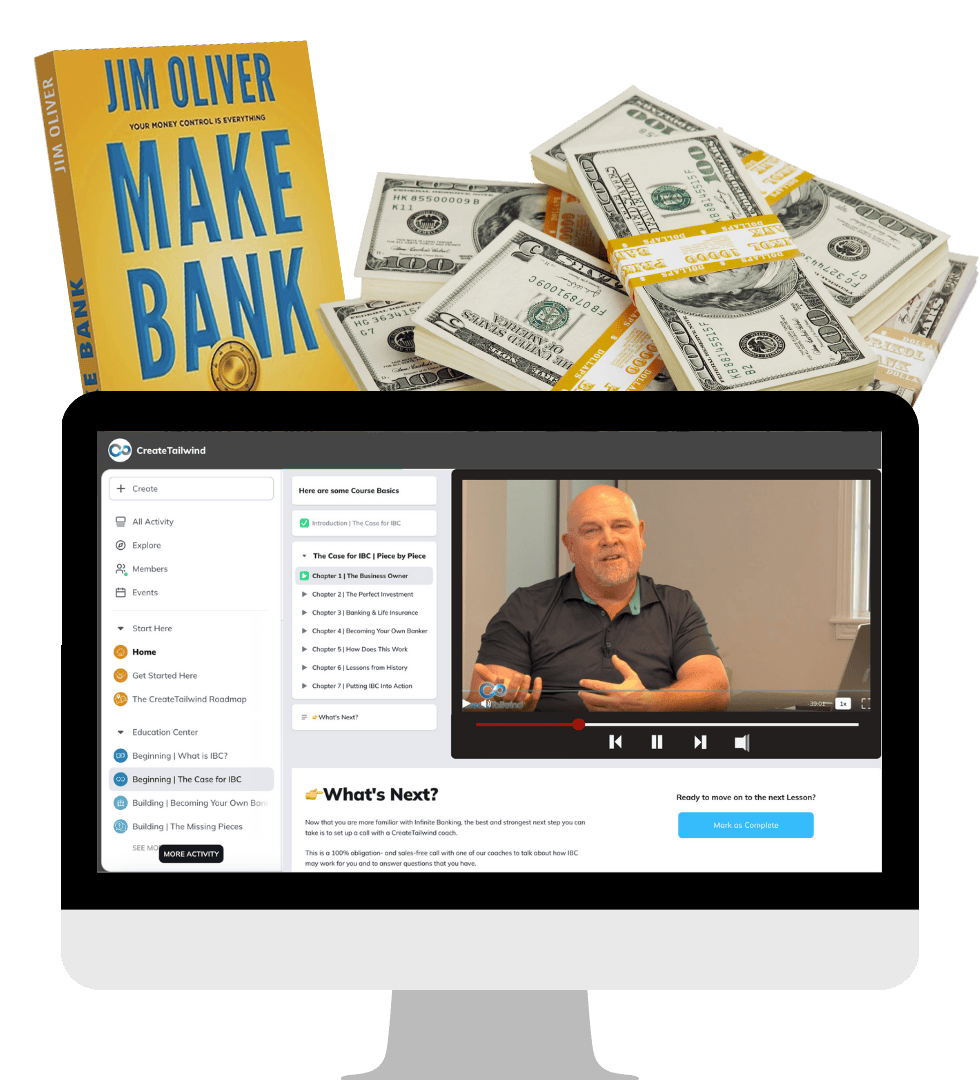by Jim Oliver
Most people don’t plan their financial life—they react to it. A baby shows up, and they’re scrambling for childcare and insurance. A parent needs care, and they’re panicked, trying to find liquidity in a portfolio that’s locked behind penalties and restrictions. A business opportunity falls into their lap, and they miss it because they don’t have access to capital.
That pattern—reactive, emotional, expensive—is exactly what we’re here to eliminate.
At CreateTailwind, we don’t believe in budgeting our way to freedom. We believe in building a financial system that puts you in control. Not just for today’s bills or tomorrow’s retirement, but for the inevitable life events you will face—and for the opportunities you don’t even see coming yet.
Life Doesn’t Follow a Schedule
You might know when your baby is due. You might know the general ballpark for retirement. But most of life’s biggest financial moments don’t give you a heads-up. They hit hard and fast.
- A parent needs full-time care
- A property you’ve been eyeing suddenly goes on sale
- A business partner backs out of a deal
- You get downsized
- You get divorced
- You get sick
And in these moments, what determines your outcome isn’t just how much you earn or how much you’ve saved—it’s how your system is structured.
Are you ready to respond with power—or forced to panic because your money is locked up, tied up, or vaporized?
Why Traditional Finance Sets You Up to Fail
The mainstream financial model trains you to lock your money away in government-sponsored vehicles—401(k)s, IRAs, 529s—and tells you that if you just wait 30 years and defer gratification long enough, it’ll all work out.
But here’s the problem: those accounts are designed for accumulation, not access. They’re structured to limit your control, penalize your flexibility, and put someone else in charge of when and how you use your own money.
So when life happens—and it will—you’re stuck.
That’s not a plan. That’s financial imprisonment.
A Better Way: Building a System that Responds to Life
We take a radically different approach. Instead of trying to predict every life event, we help our clients build a system that can adapt to any event. A system that puts them in control, no matter what.
The core of that system? The Infinite Banking Concept (IBC).
When you use IBC—through a properly structured whole life insurance policy—you’re creating a personal banking system. It’s not a savings account. It’s not an investment. It’s a liquid, tax-advantaged pool of capital that grows consistently and is always available for you to borrow against, on your terms.
This gives you a financial foundation that can respond with speed, flexibility, and control.
Real Life Is Messy. Your Capital Needs to Be Fluid.
It’s easy to assume IBC is just a smarter way to save. But if that’s all you use it for, you’re leaving power on the table.
Most of our clients aren’t just storing capital—they’re deploying it. They’re actively using policy loans to:
- Invest in real estate
- Expand their businesses
- Buy equipment or inventory
- Consolidate high-interest debt
- Fund private lending deals
And the best part? While that capital is out working in the world, the policy itself continues to grow, uninterrupted.
This is where people go from thinking like savers to thinking like capital allocators. From consumers to producers. From borrowers to bankers.
Managing IBC When You’re Investing, Not Just Saving
Here’s the question we get all the time: “If I’m using my IBC policy to invest, doesn’t that mean I lose liquidity?”
The short answer? No. But you do need to manage it like a pro. Here’s how:
You Don’t Drain Capital—You Cycle It
When you take a loan from your policy, your cash value stays intact and continues to compound. You’re using the insurance company’s money—collateralized by your own asset. That’s leverage, and it’s in your favor.
The key is to treat it like a bank would:
- Set a repayment schedule
- Funnel cash flow from the asset back into the loan
- Reuse the loan space when it’s paid down
This is called capital recycling, and it’s what turns a static policy into a dynamic engine.
You Maintain Strategic Cash Reserves
If you’re fully deployed and another opportunity shows up tomorrow, will you be ready?
Smart investors using IBC keep a strategic buffer—often 10–20% of their total cash value—as an on-deck fund for emergencies or unexpected deals. Others fund multiple policies in staggered cycles, creating rolling availability and never running dry.
You Use Cash-Flowing Assets to Repay Policy Loans
Let’s say you borrow $75,000 from your policy to purchase and furnish two short-term rental units. After cleaning, maintenance, and platform fees, they net $3,000/month. You send $1,500/month back to your policy loan, and in five years, the loan is fully repaid—without ever touching your personal income and while your policy kept compounding the entire time.
Now you’ve:
- Paid yourself back
- Maintained uninterrupted growth in your policy
- Built equity in a real asset
- And kept total control the entire time
That’s what banking looks like.
You Ladder Policies for Scale and Speed
One policy is a great start. But if you’re playing this game at a higher level, you’ll need more than one gear.
Many of our clients build their IBC system using:
- A foundational, heavily funded policy that compounds long-term
- One or two “investment engine” policies that are actively used and repaid
- Policies on spouses, business partners, or children to expand coverage and opportunity
This gives you rolling capital availability—never fully tapped out, never stuck waiting.
You Don’t Confuse Use with Loss
When you borrow against your policy, your capital isn’t gone—it’s just in uniform doing a job somewhere else. Your investment is cash flowing, your policy is compounding, and you still own the system.
Compare that to a 401(k) or IRA. Once the money’s in there, it’s off-limits or penalized. With IBC, you’re still holding the reins.
What This Looks Like in Real Life
Mark, one of our clients, started funding a policy at $50K per year. By year six, he had $280,000 in cash value. When his mother was diagnosed with early-onset dementia, the family needed to fund care immediately.
He borrowed $100,000 against his policy with no paperwork, no penalty, no tax bill, and no disruption to his business.
Meanwhile, his policy kept compounding in the background. His family stayed afloat. He didn’t miss a beat.
That’s not an investment return—that’s financial capability.
Final Thought
Major life events are coming—some expected, some out of nowhere. You can’t control the timing. But you can control your preparedness.
When you build your system using Infinite Banking, you gain a level of agility that most people will never experience.
You move when others wait.
You capitalize while others panic.
You grow when others shrink.
You don’t react. You respond—with confidence, with control, and with clarity.
So whether you’re planning for a new baby, scaling your business, caring for a parent, or seizing your next deal—don’t just save for it. Build a system that funds it.







